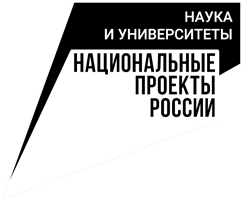The seminar is devoted to various aspects of the application of supercomputer modeling methods for solving weather and climate forecasting problems.
Seminar Leader:
- Sadovnichy V.A., academician, rector of Lomonosov Moscow State University
Co-leaders of the seminar:
- Wilfand R.M., Doctor of Technical Sciences, Scientific Director of the Hydrometeorological Center of Russia
- Dobrolyubov S.A., Corr. RAS, Dean of the Faculty of Geography, Lomonosov Moscow State University
- Lykosov V.N., Corr. RAS, chief scientist Institute of Computational Mathematics, Russian Academy of Sciences, Head. Laboratory of Supercomputer Modeling of Natural and Climatic Processes of RCC MSU
- Stepanenko V.M., Doctor of Physics and Mathematics, Deputy Director of RCC MSU
Scientific Secretary of the seminar:
- Mortikov E.V., Ph.D., Researcher of RCC MSU
PROGRAM
17:30
| V. Brovkin | Max Planck Institute for Meteorology, Hamburg, Germany |
| T. Kleinen | Max Planck Institute for Meteorology, Hamburg, Germany |
| A. Dallmeyer | Max Planck Institute for Meteorology, Hamburg, Germany |
| T. Riddick | Max Planck Institute for Meteorology, Hamburg, Germany |
| V. Gayler | Max Planck Institute for Meteorology, Hamburg, Germany |
| U. Mikolajewicz | Max Planck Institute for Meteorology, Hamburg, Germany |
| T. Ilyina | Max Planck Institute for Meteorology, Hamburg, Germany |
| M. Claussen | Max Planck Institute for Meteorology, Hamburg, Germany |
SIMULATION OF CLIMATE AND CARBON CYCLE IN THE LAST 20,000 YEARS
In the Quaternary period (last 2.5 million years), the Earth experienced about 50 ice ages. The range of climate and environmental changes was enormous. At the peak of the glacial stages, global temperatures dropped by 3-5 degrees Celsius, sea levels dropped 130 meters, and atmospheric CO2 concentrations were about 100 ppm lower. The coldest glacial phases ended abruptly and the Earth system returned to interglacial conditions. There are many fundamental properties of the dynamics of the climate system during the ice ages that are important for the future climate.
The PalMod (Paleo Modeling) project, funded by the German Ministry of Education and Research (BMBF), aims to bridge long-standing scientific gaps in our understanding of the dynamics and variability of the climate system and the carbon cycle during recent glacial cycles. Why do the last ice cycles have the same periodicity, why do ice sheets grow slowly and quickly disappear? Why do atmospheric CO2 and CH4 concentrations change in sync with climate change? What drives millennial climate variability in cold phases? The aim of the project is to model the climate and biogeochemistry of the Earth during the last glacial cycle with a comprehensive model of the Earth system (MPI-ESM, AWI-ESM and CESM).
At the Max Planck Institute for Meteorology, we use our flagship Earth system model MPI-ESM1.2. The ECHAM6.3 atmosphere model is directly related to the JSBACH3.2 land model through surface exchange of water, energy, momentum and greenhouse gases. JSBACH incorporates a dynamic vegetation model, and the distribution and density of forests and grasses change in response to climate and CO2 changes. The wetland model simulates CH4 emissions from northern and tropical regions. The atmosphere is connected through OASIS3 to the MPIOM1.6 dynamic ocean and sea ice model, which includes the HAMOCC6 ocean biogeochemistry model. We use the PISM model to simulate ice sheets in the Northern Hemisphere, and the VILMA solid Earth model simulates glacial isostatic regulation. The interactive hydrological flow model simulates river flow changes in response to orographic changes, including watercourses on the open arctic and tropical shelves. On the Mistral supercomputer of the German Climate Computing Center (DKRZ), the T31 model simulates several hundred years a day.
In the current, 2nd phase of PalMod, we primarily focus on modeling the last deglaciation. The interactive dynamics of the land surface, ocean and atmospheric circulation is driven by reconstructed ice sheets and greenhouse gases over the past 23,000 years. The discharge of fresh water as a result of the melting and destruction of ice sheets leads to a stop of the AMOC and a significant cooling of the northern hemisphere for several thousand years. In turn, the recovery of AMOC leads to dramatic warming and widespread vegetation in areas freed from ice sheets. The model simulates the displacement of northern boreal forests and wetter and greener North Africa in the early Holocene (about 8000–6000 years ago) according to available data. We also performed calculations for CMIP6 scenarios extended by several thousand years in the future, with a focus on the interactive CH4 cycle. The next phase of the project will include interactive ice sheets during deglaciation, as well as modeling the formation of glaciers about 110-120 thousand years ago.
PalMod website: www.palmod.de
Due to the self-isolation regime, the seminar will be held in the form of a webinar on the Zoom platform.
Join Zoom Meeting: https://us02web.zoom.us/j/85492550467?pwd=d094V0VIZ0JYMWQvMy9IOU9jK29odz09
Meeting ID: 854 9255 0467
Passcode: 895867
Instructions for installing and using the Zoom platform are available here:
https://support.zoom.us/hc/ru/articles/201362033-Начало-работы-на-ПК-и-Mac

